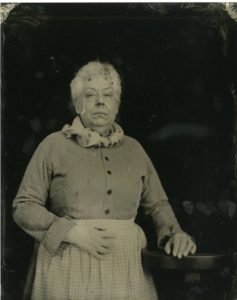Appearing in a little over 10 scenes throughout the 135-minute run-time of Little Women (2019), a critically acclaimed coming-of-age story that follows the lives of the March girls, Hannah Mullet is an ornamental character that is almost exclusively reacting to what is currently being presented to the audience. In a broader sense of the story, Hannah’s character is important to the girls because she steps in as a supplemental mother figure for all of them as they are growing up and she is present during most of the film’s pivotal moments, yet when we actually take a look at her role as a character, she seems to ripple of the emotions of other characters in the scene (Straw 125). Throughout the film, this ripple effect is seen in how Hannah indirectly mimics Marmee, the girl’s mother, in the way she reacts. A particularly good example of this is found in the scene where Jo March arrives to their childhood home after hearing that her sister Beth is very sick (0:43:30); Hannah only reacts to Jo’s arrival after Marmee has had an opportunity to react, and this parallel is further cemented by the fact that Hannah emulates Marmee’s physical movements in the scene such as the way they hug Jo and their presence in the frame. This presence and positioning in a scene correspond with the level of prestige she is given as a character, as she is usually found at the back of a frame or around the edges of the room where we can get, from her facial expressions and body language, a good idea of the current tone of the scene (Straw 122). As Straw points out in the introduction to the “Small Parts, Small Players Dossier,” we may find these ornamental characters in such places where the audience’s focus needs to be redirected towards a specific section of the frame, and Hannah’s reactions, body language, and positioning within the scene serve all these purposes by making us shift our attention from the main characters and take in the scene as a whole (80).
Gerwig, Greta, director. Little Women. Columbia Pictures, 2019.
Straw, Will. “Introduction.” Screen, vol. 52, no. 1, 2011, pp. 78–81, https://doi.org/10.1093/screen/hjq057
Straw, Will. “Scales of presence: Bess Flowers and the Hollywood extra.” Screen, vol. 52, no. 1, 2011, pp. 121–127, https://doi.org/10.1093/screen/hjq061

Provide Feedback